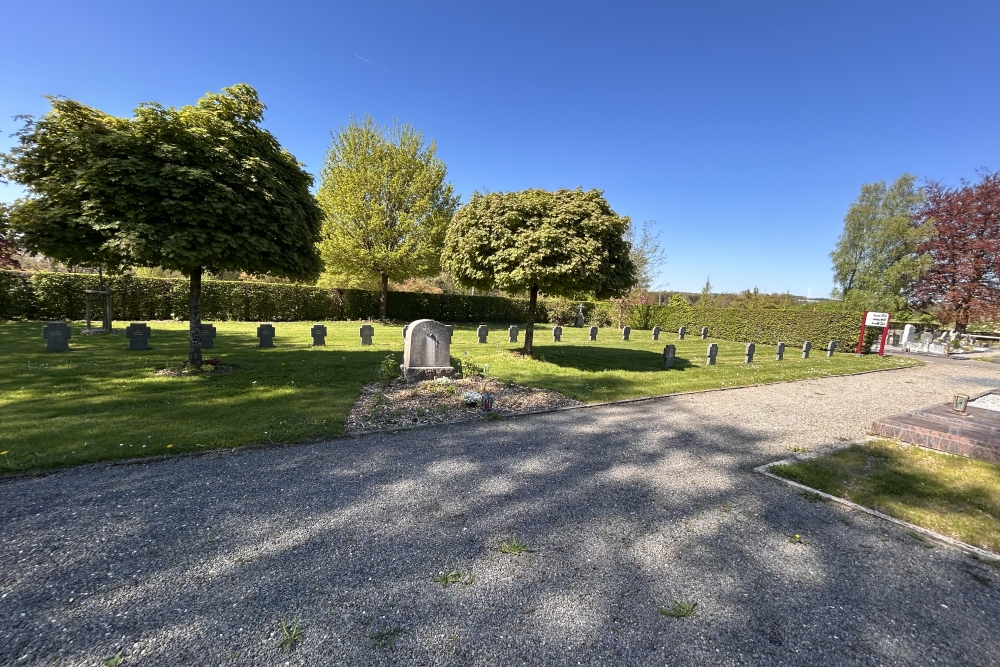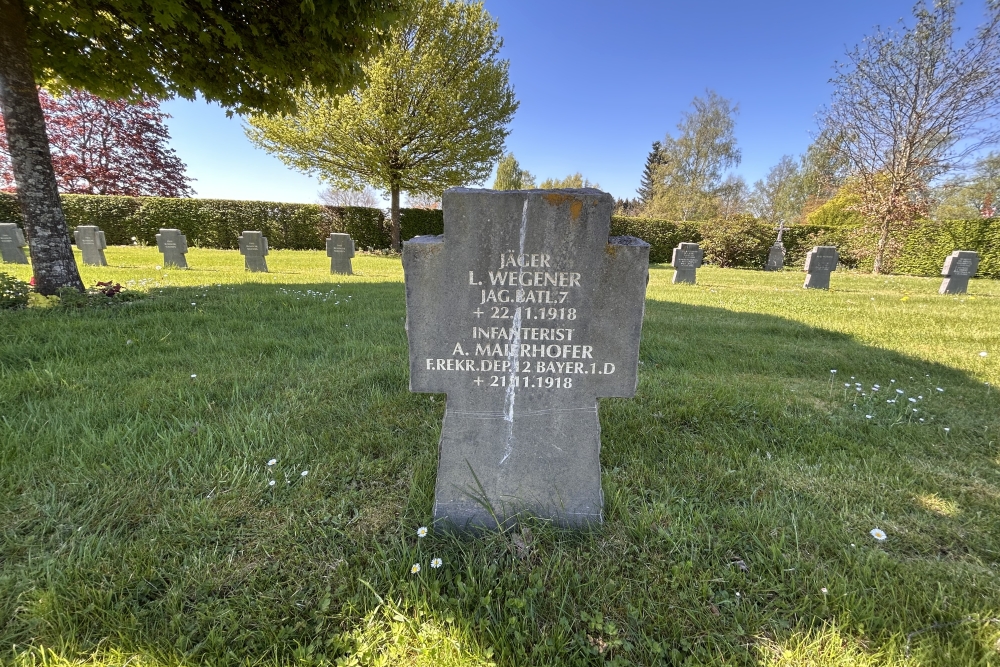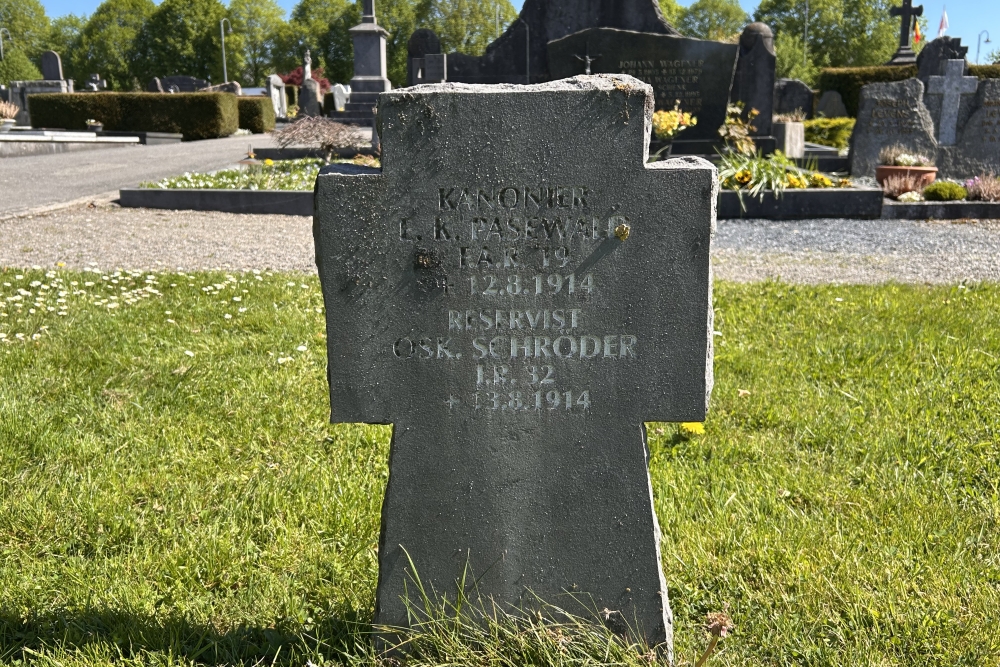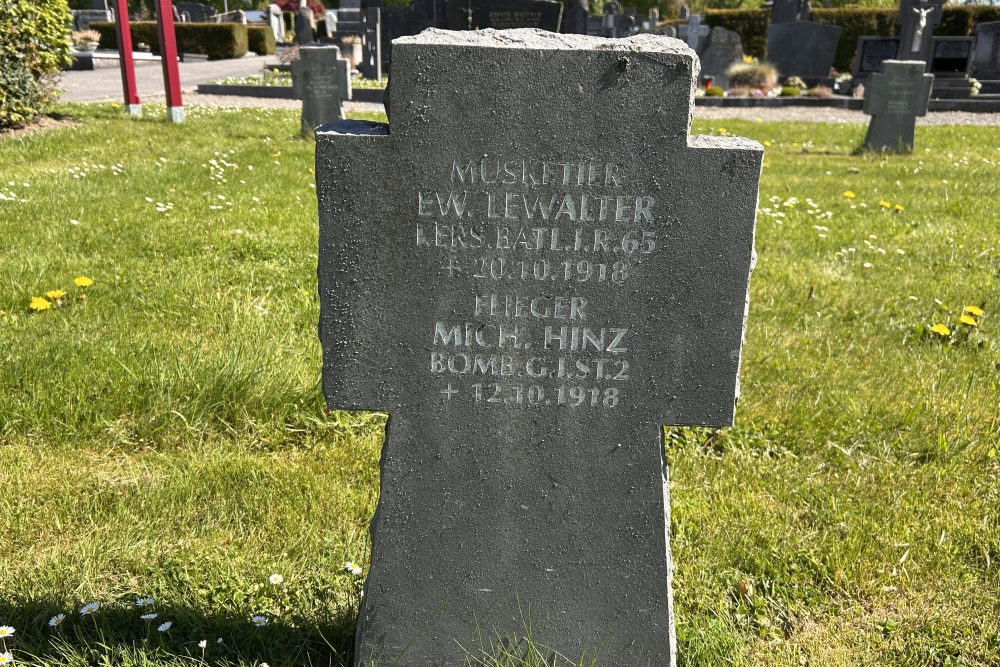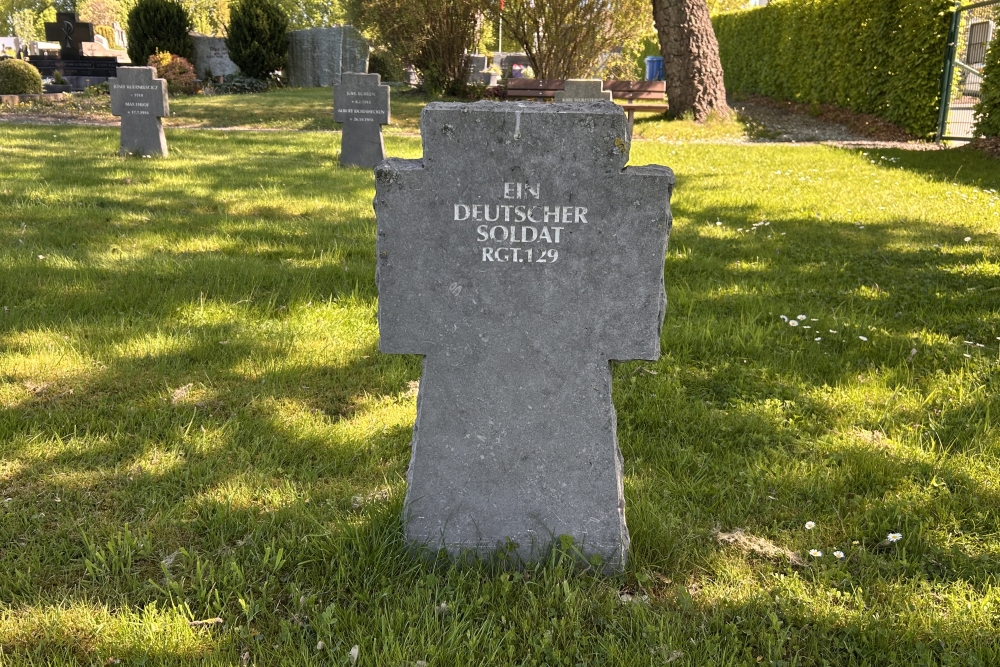German War Graves Sankt Vith
The municipal cemetery of St. Vith (Belgium) contains a German Field of Honor with of 74 World War II fallen soldiers. The soldiers are buried on both sides of the headstone. In most cases with two per side of the grave.
Sankt Vith as well as the Eupen-Malmedy area belonged to Germany until the end of World War I. As part of reparations and reparations, Belgium claimed these areas. The Treaty of Versailles in 1919 assigned them to Belgium.
Not surprisingly, this German cemetery is located in the municipal cemetery. The Germans buried here are all soldiers who died of their wounds and were nursed in the military hospital of St. Vith.
Most of the German soldiers buried here died at the end of the war or after the armistice of Nov. 11, 1918. Such as the grave of;
WEGENER L., hunter with the Jäger Battalion 7, died November 22, 1918.
MAIERHOFER A., infantryman with the Freiwilliges REKR. DEP. 12 Bayer 1.D, died Nov. 21, 1918.
Also buried are soldiers who died in the first days of the war in August 1914, such as the grave of;
PASEWALD E.K., gunner in the Feld Artillerie Regiment 19, died Aug. 12, 1914.
SCHRÖDER Osk., reservist with the Infantry Regiment 32, died Aug. 13, 1914.
There are 6 German soldiers buried whose names remain unknown, 3 of them in one common grave.
One pilot is buried
HINZ Michael, pilot with the Bomb. Geswader I.ST. 2, died on Oct. 12, 1918.
Because Sankt-Vith was close to the border with Belgium in 1914, soldiers wounded in the first attacks on Belgium in August 1914 were nursed here in the military hospital. After their death were also buried in this cemetery.
Also buried at the beginning of the cemetery is a military doctor Jouck who was killed in action on February 19, 1915 in Champagne, France.
Also buried in this same plot are 60 Russian prisoners of war who died due to the hardships of their forced labor and poor living conditions in their prison camp. In 1916-1917, prisoner of war Russians built the railroad connection between St. Vith and Gouvy, and also between Vielsalm and Born. The Russians are all buried without a name on the grave. The monument in the center front of the field of honor does mention these names.
Do you have more information about this location? Inform us!
Source
- Text: Ed Lewandowski
- Photos: Ed Lewandowski
Nearby
Point of interest
- Hiding Place Schieferstollen - St-Vith
- Civilian Shelter Schieferstollen Recht - Recht (Sankt Vith)
- German 75mm Pak 40 Meyerode - Meyerode (Amel)
Monument
- War Memorial Sankt Vith - Sankt Vith
- Memorial 2nd Infantry Division - Sankt Vith
- Memorial Dwight D. Eisenhower - Sankt Vith
Cemetery
- Russian War Graves Sankt Vith - Sankt Vith
- Belgian War Graves Sankt Vith - Sankt Vith
- German wargrave Sankt-Vith - Sankt-Vith
